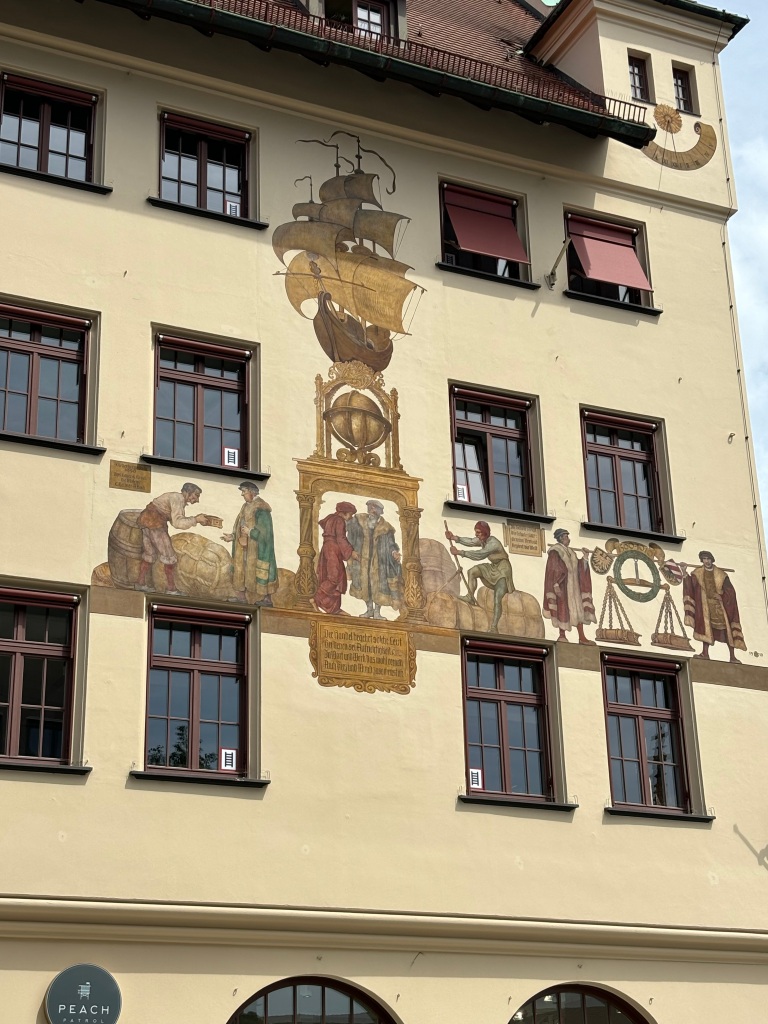May 15, 2024
Today’s port brought back many happy memories for us. Has it really been ten (!) years since we last visited these same sights with our good friends Keith and Kathy Snider?
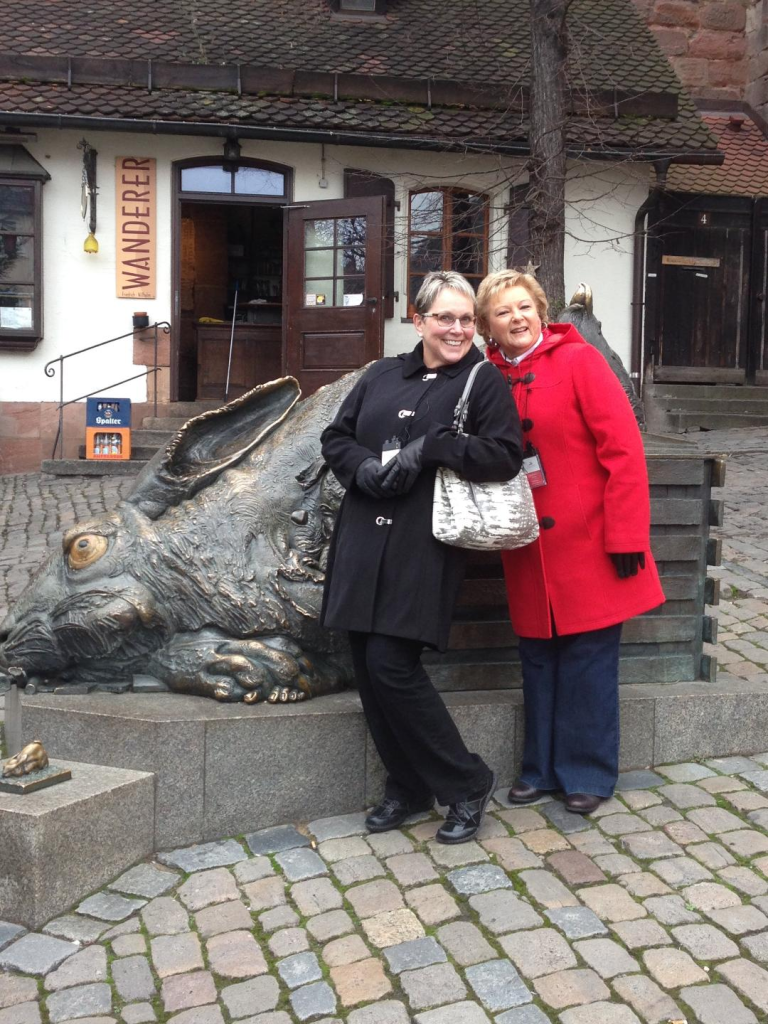
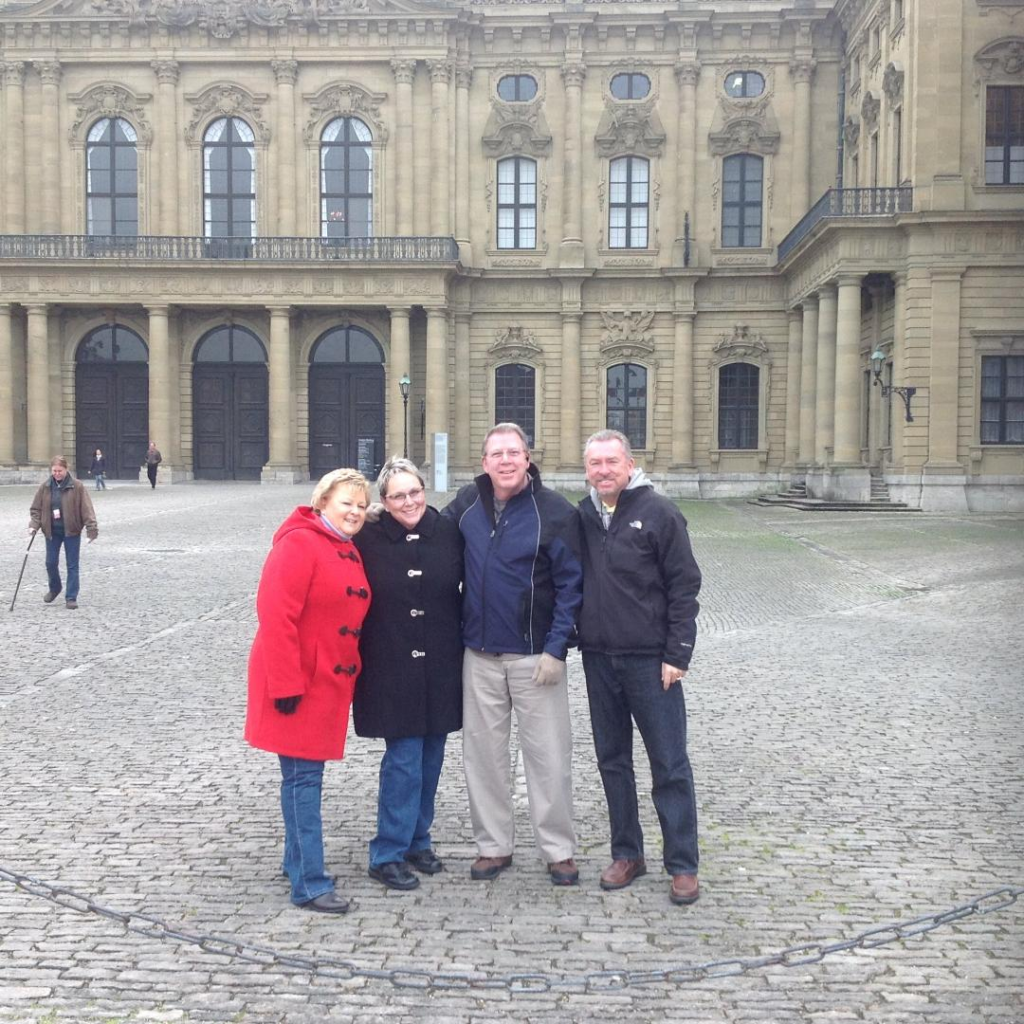
Nuremberg then, and now…
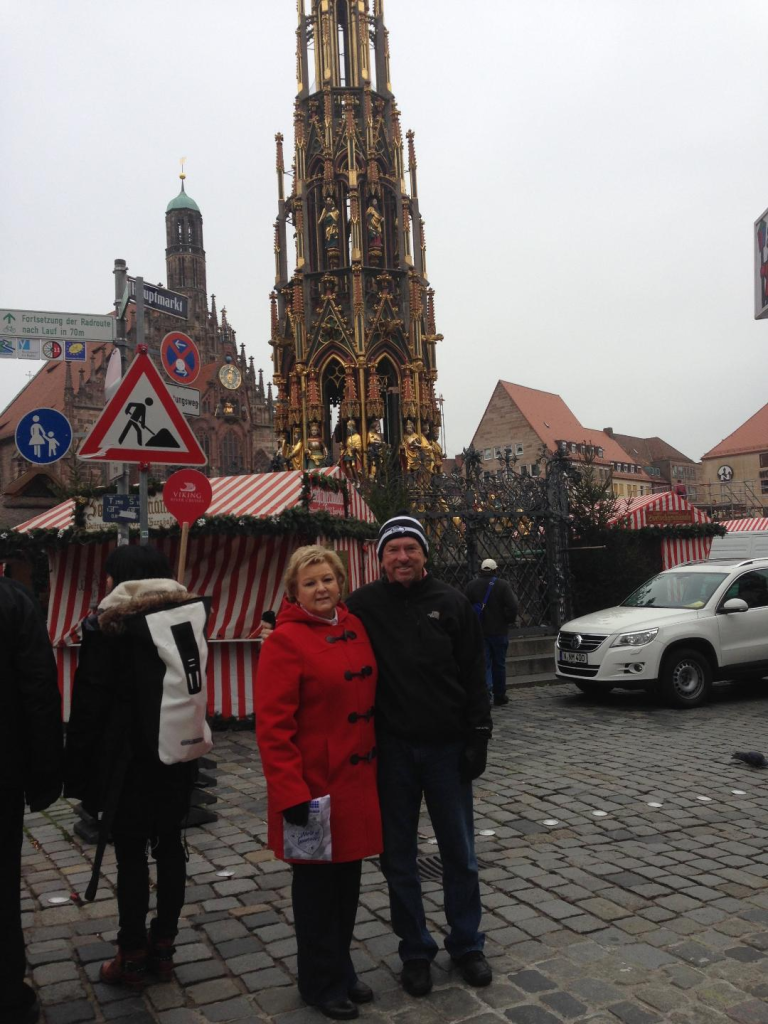
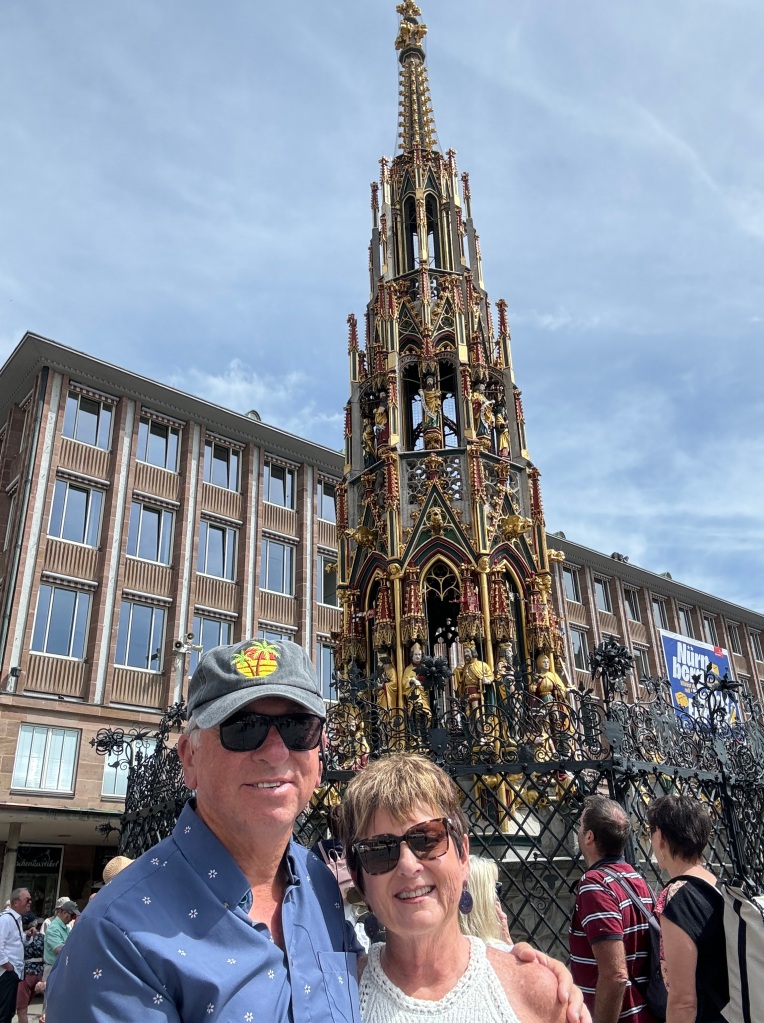
It was a bit colder in November 2014 – we were all freezing! So much nicer to visit on a warm and sunny May day!
The written history of Nuremberg dates back to 1050, but for many the first thing that comes to mind at the mention of its name are the famous Nuremberg Trials. It was with this history we began our tour. We did not get out and visit any of these sites, just drove past. I think maybe it’s Germany’s way of telling us we don’t want to celebrate this time in our history, but we must never forget it, either, lest we repeat it.
We drove past Zeppelin Field, the site of six Nazi Rallies between the years 1933-38, the Congress Hall (built to resemble the Greek Coliseum it can hold up to 50,000 people), and a building that once served as a Nazi barracks for Jewish prisoners. The great irony is that today that same building serves as the Nuremberg Federal Office of Immigration and Refugees. What Hitler intended for bad, God intended for good!
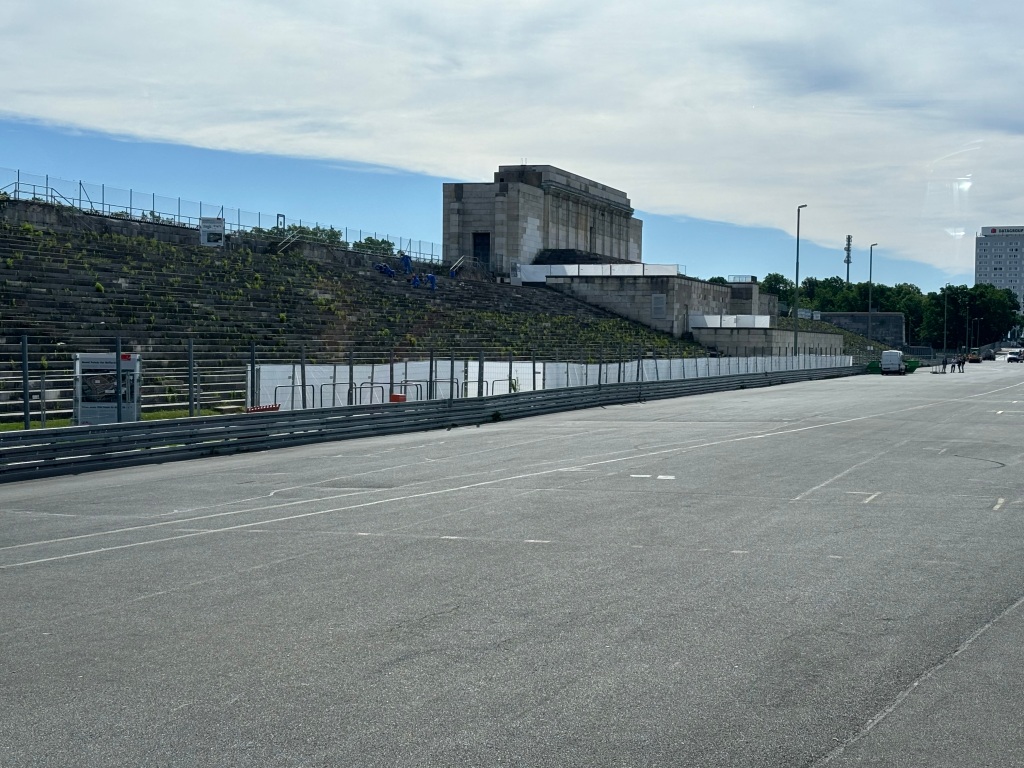
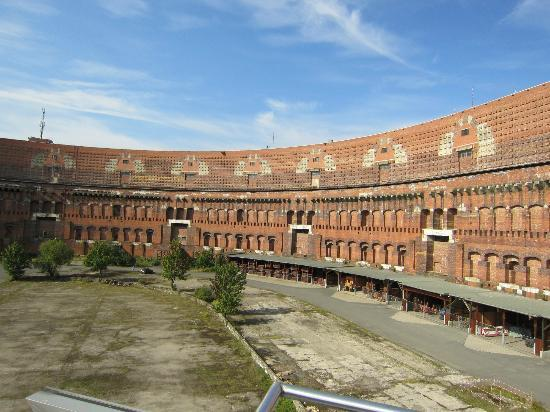
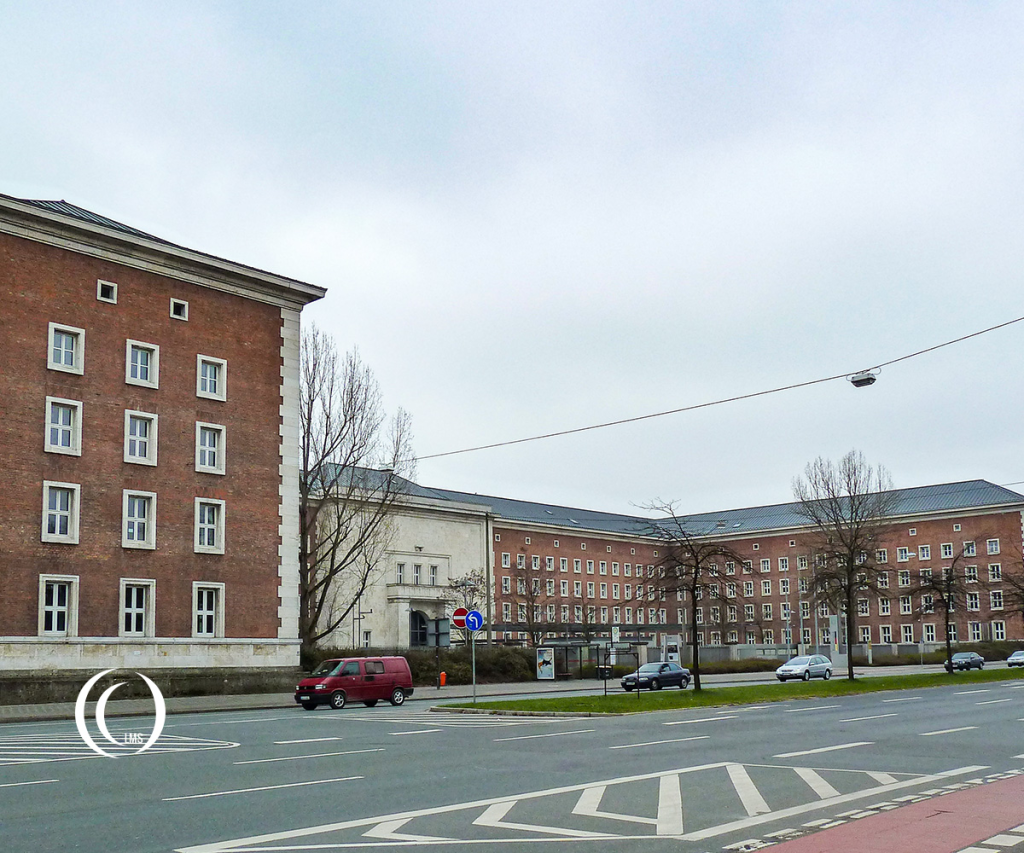
And finally, the Hall of Justice where in 1945-46 the International Military Tribunal held 24 Nazi leaders accountable for war crimes committed during the Holocaust.

From there we made our way to the Imperial Castle of Nuremberg, considered one of Europe’s most formidable fortresses. Along the way we passed sections of the old city wall and some of the towers used to protect it. These walls date back to the 12th century and cover about 2-1/2 miles. You’ll notice in the first picture that there appear to be two walls. That space in between was meant for a moat that was never filled with water – but it was nice to have, just in case.
The square towers were the first line of defense, to see who was approaching the city. Seventy-one of these towers remain and many are in use as private homes, art studios, associations, youth centers, etc.
There are three round towers. These were the watch towers for the castle.
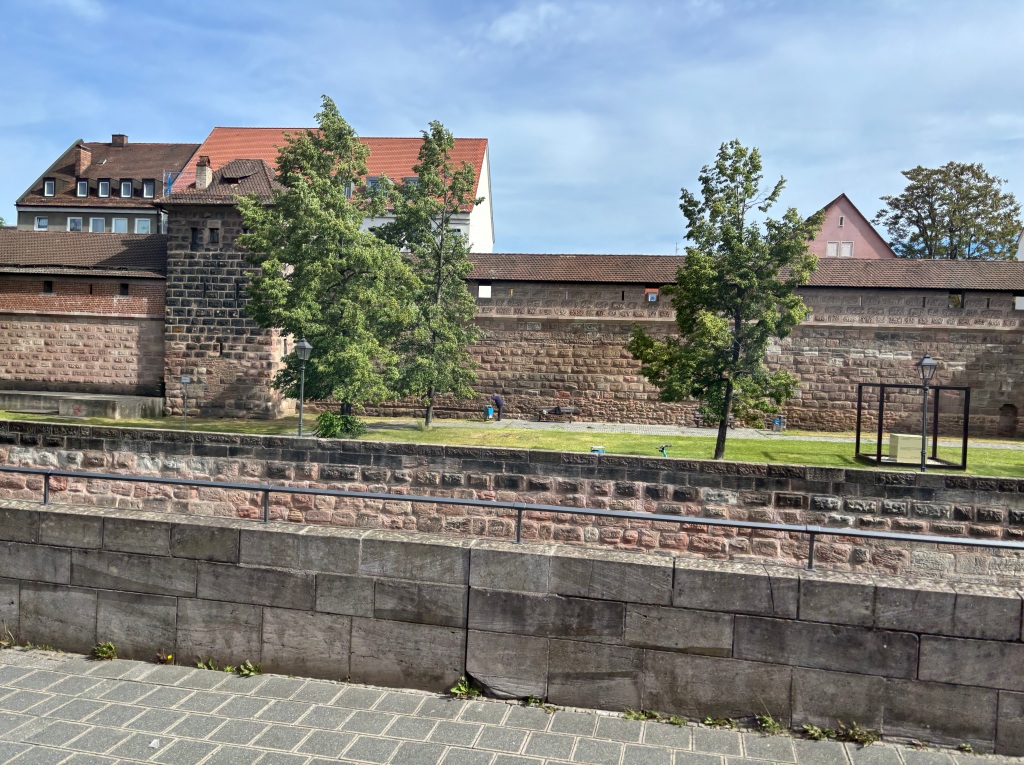
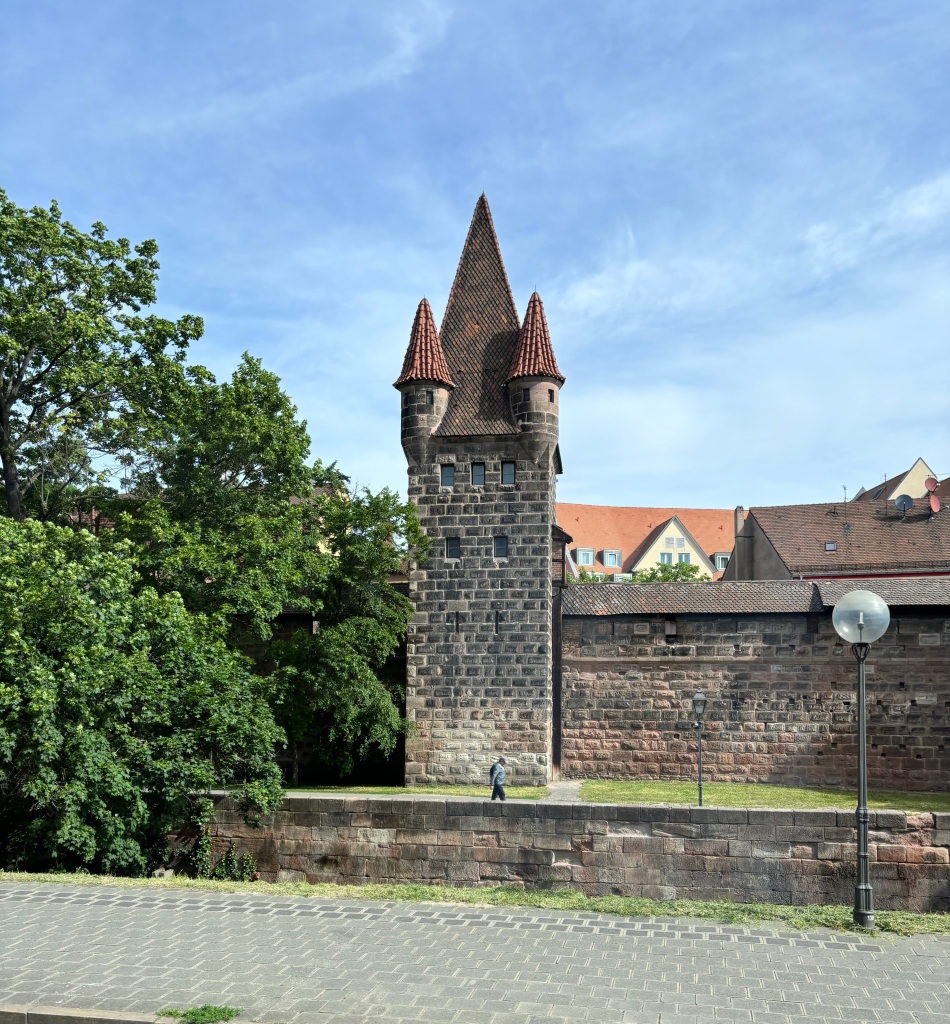

Entering from the back of the castle, we could see why it is considered one of the most formidable. You would have to approach from the rear to attack, climbing a very steep hill clearly visible from the tower you see in the background of the first picture. Then you would have to make your way through the tunnel and across the empty moat dodging a bombardment of burning bales of hay and buckets of excrement from the openings above.
The holes in the bricks are from the original construction process. Holes were drilled into the stone, a rope was threaded through it, attached to a crane, and then the stone was lifted into place.
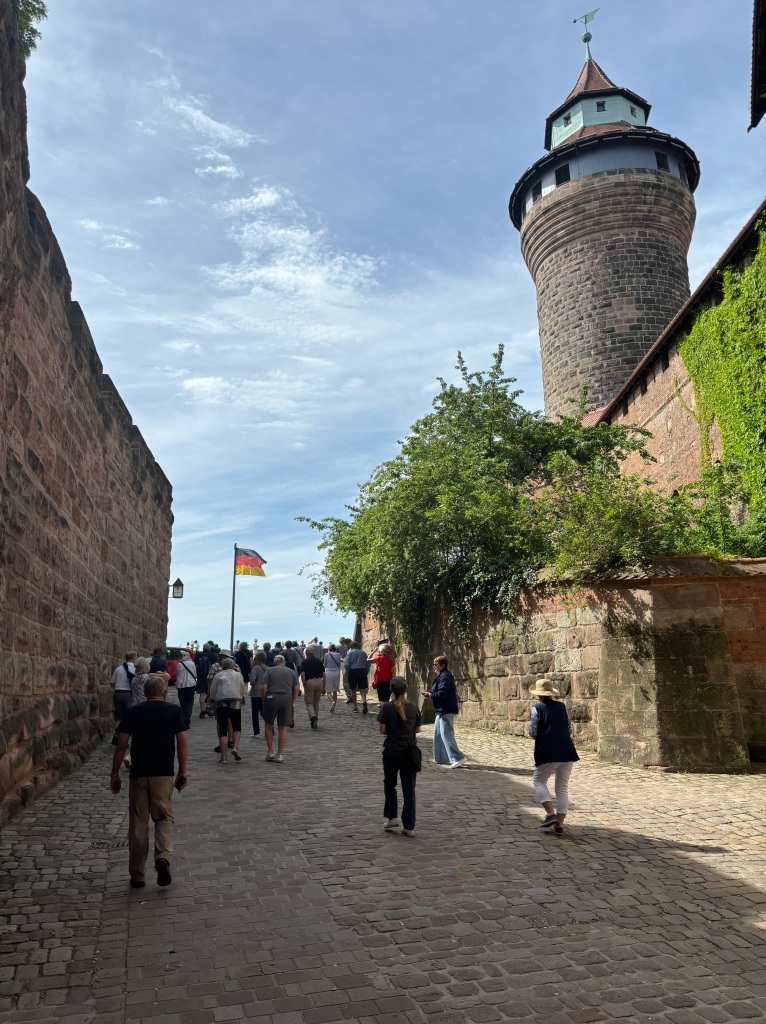
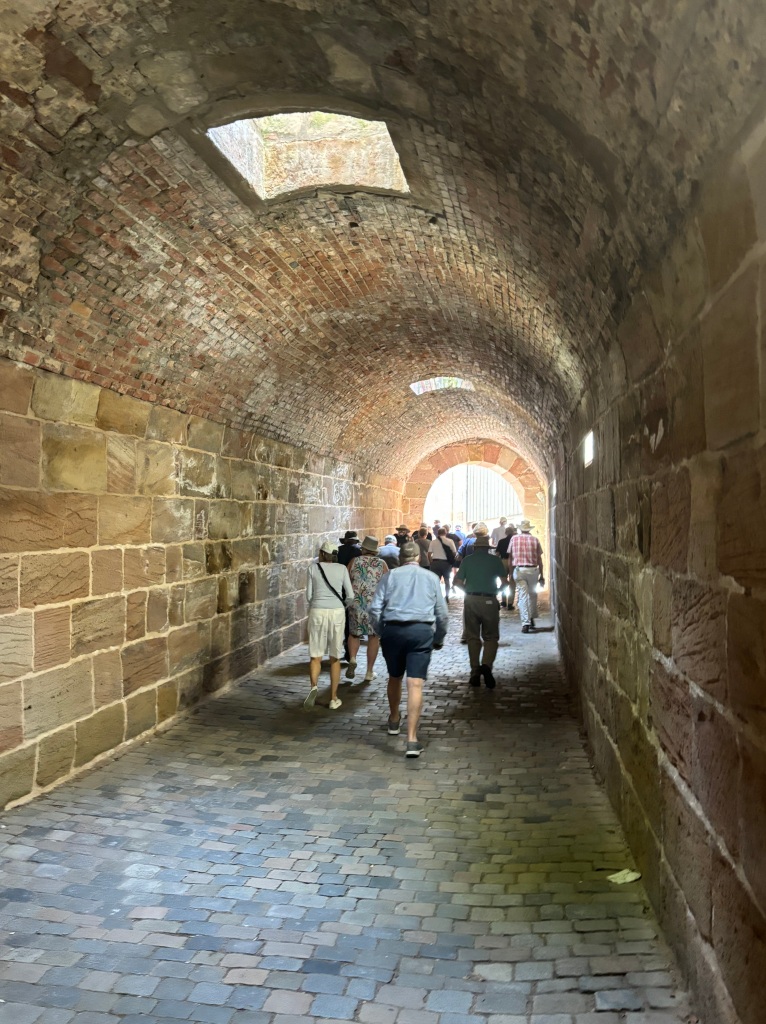
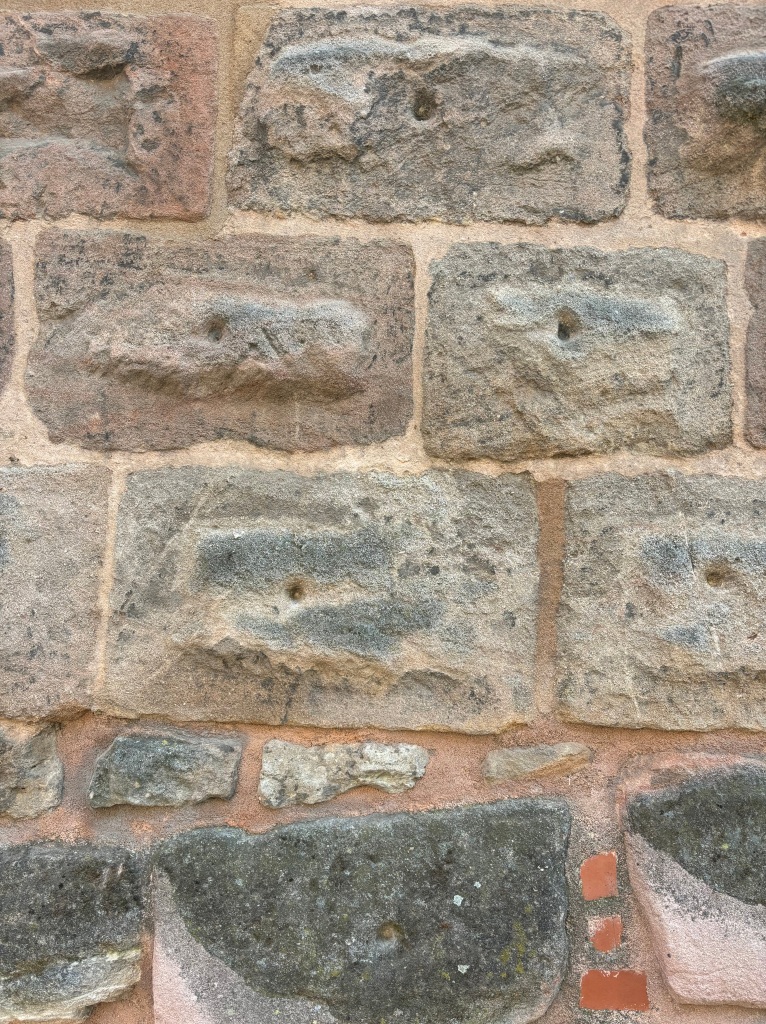
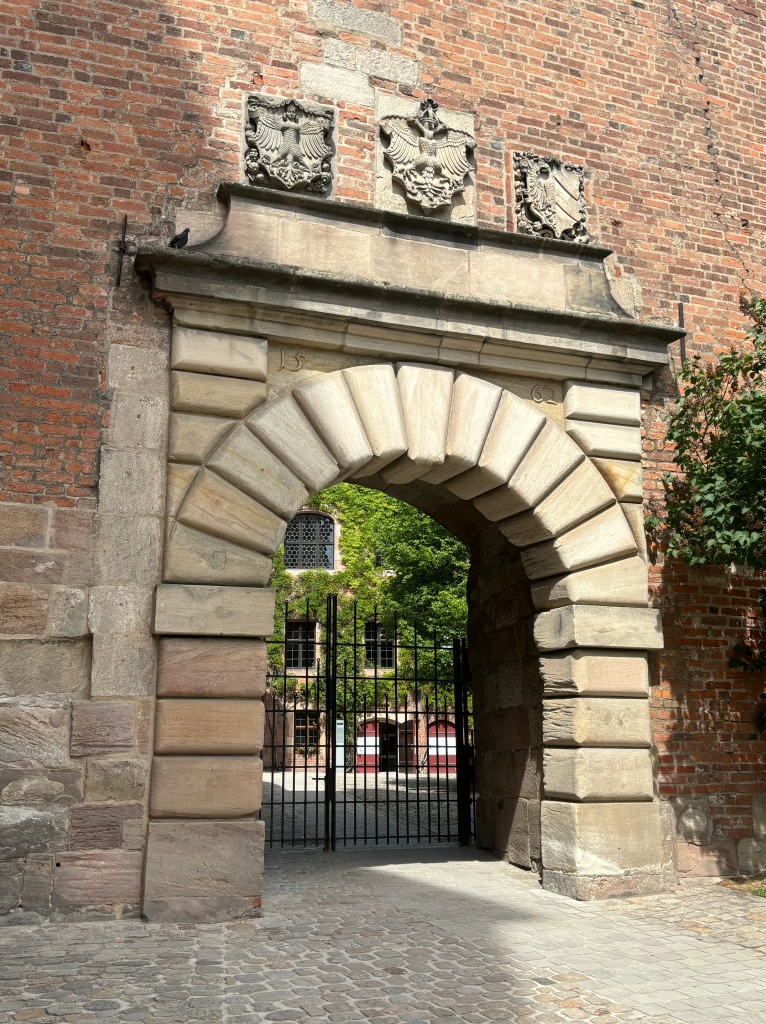
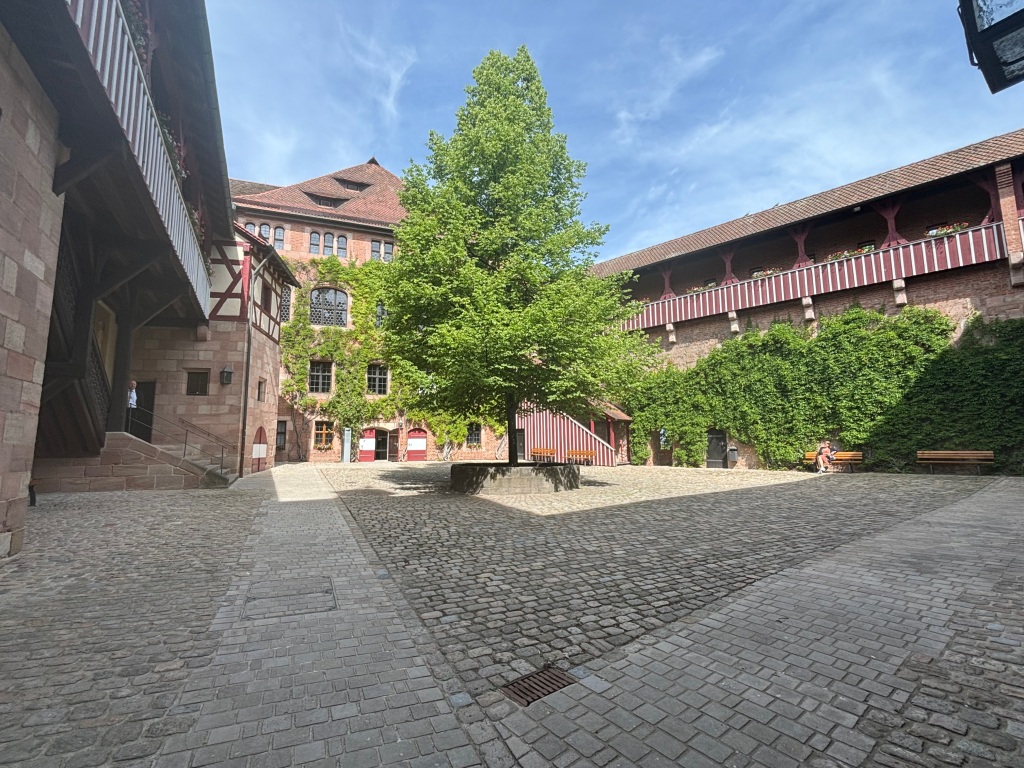

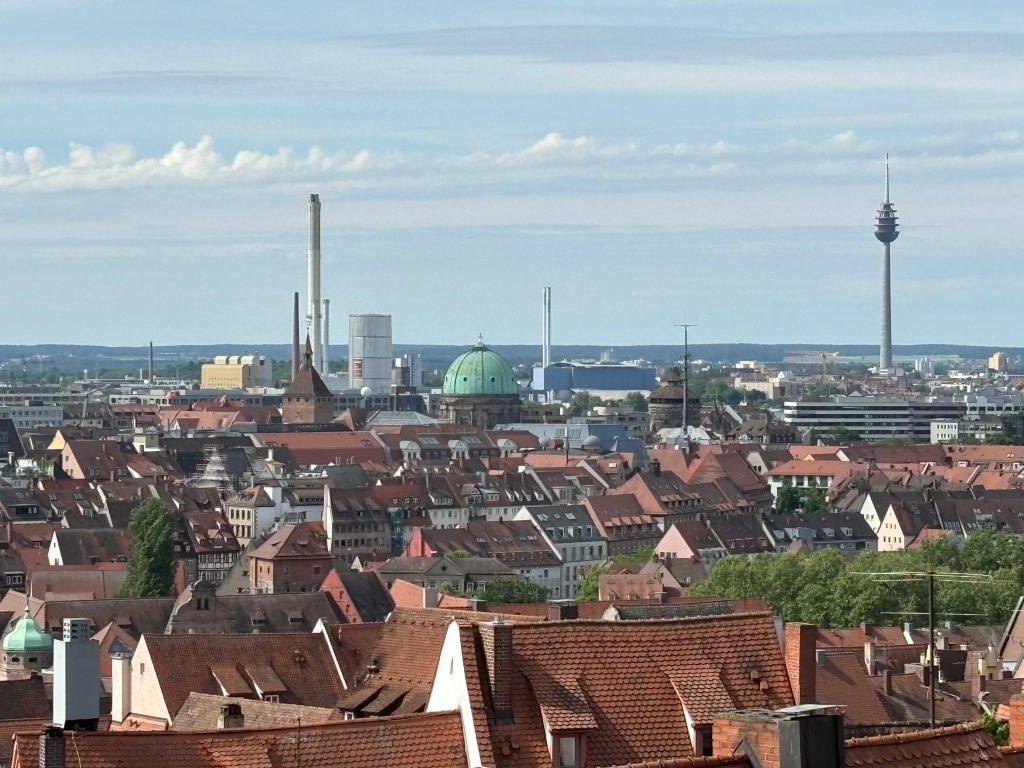
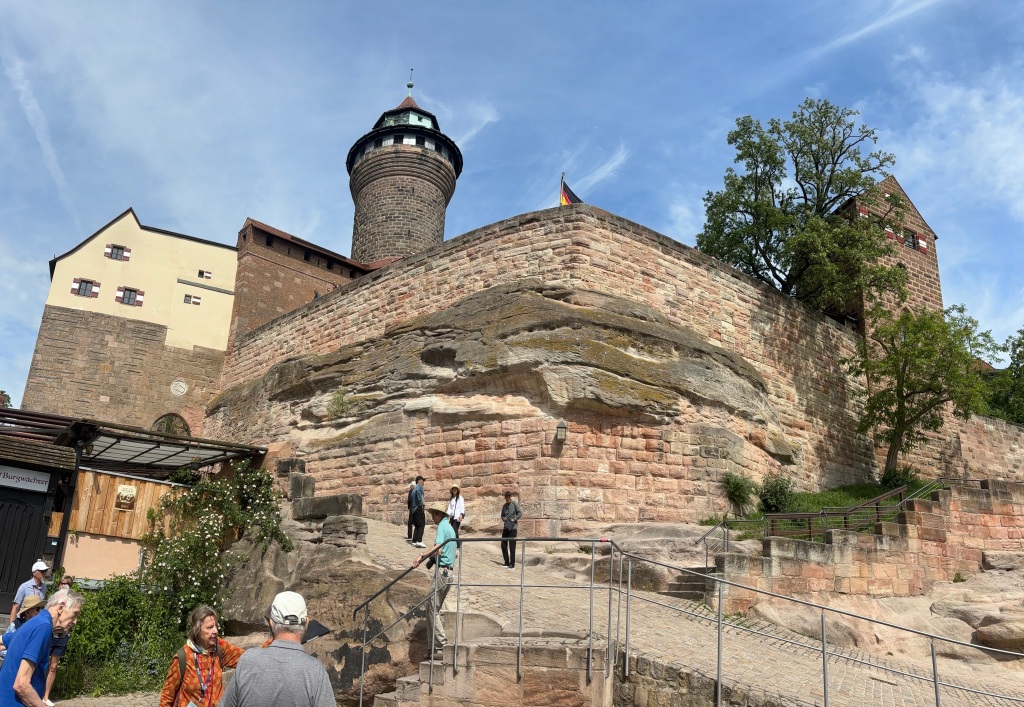
Above the arch to the courtyard of the residence are the official coats of arms. Even today if you receive an official letter from the City of Nuremberg it will contain these emblems.
Despite the impressive size of the castle that you can see from the courtyard, it only had seven inhabitable rooms. During the Middle Ages Kings and Emperors (fun fact: Holy Roman Emperors were kings that had been coronated by the Pope) didn’t actually live in their castles. They didn’t have capital cities or primary residences; they spent their time traveling between their conquered lands and castles, usually staying no more than 2-3 months in each.
The tower you see in the third picture, middle row, was the last refuge for the emperor if there was an attack. It contained a door on the side that could only be reached with a ladder and was always stocked, just in case.
The castle is all the more impressive when you consider it was initially built in the year 1,000 AD, and is built directly into the sandstone surrounding it.
Our tour continued through the old town square, past city hall and the 13th century Church of St. Sebald.
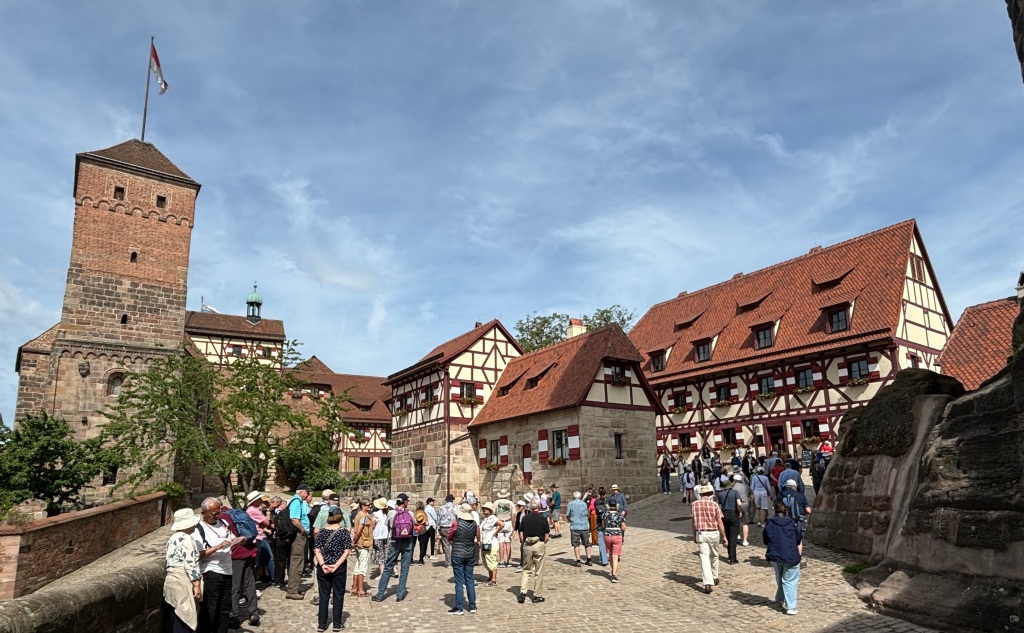
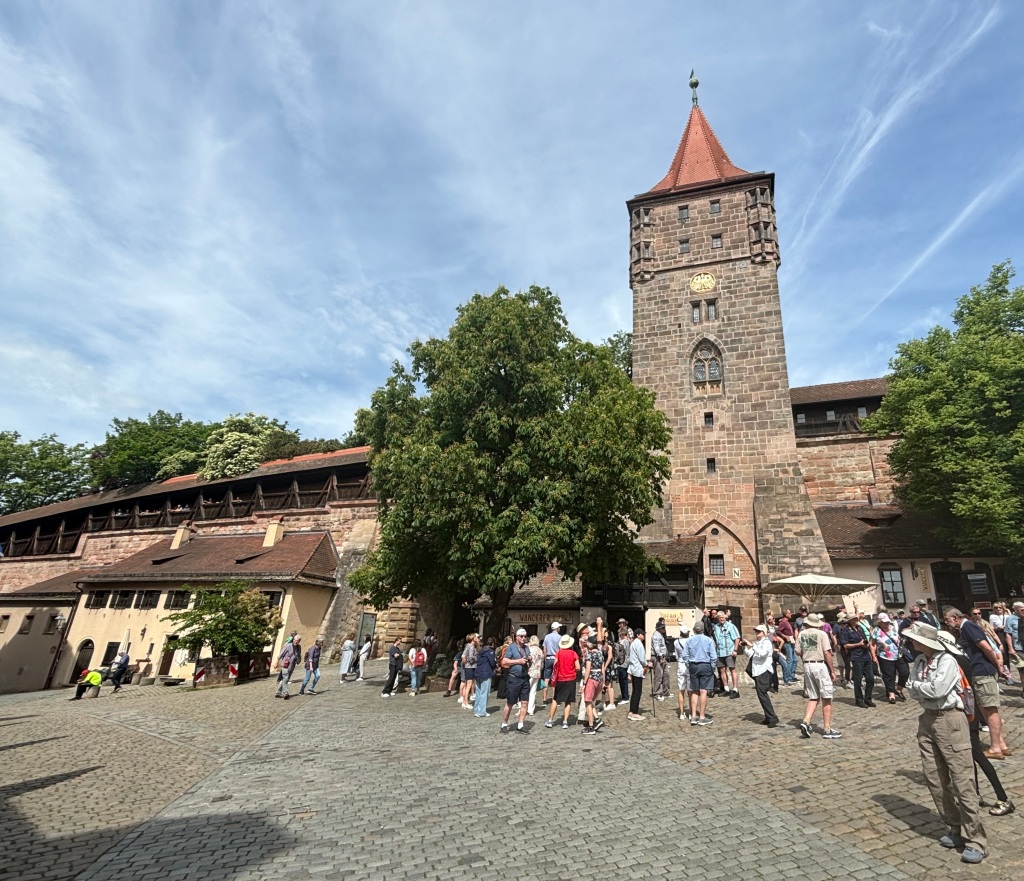
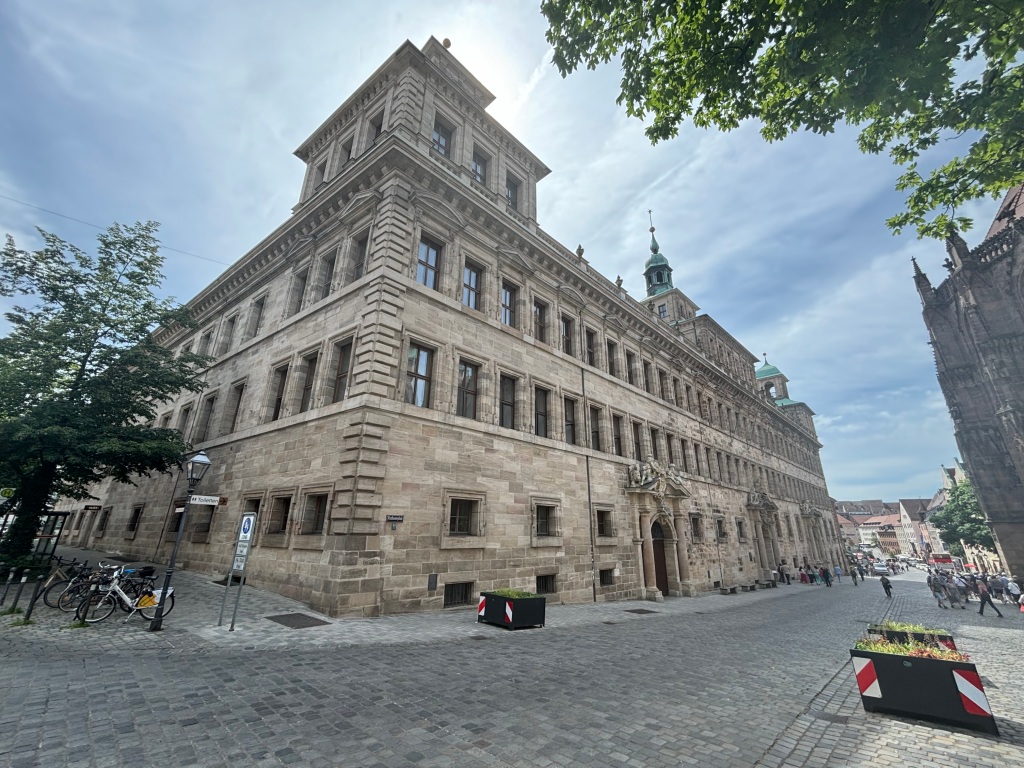
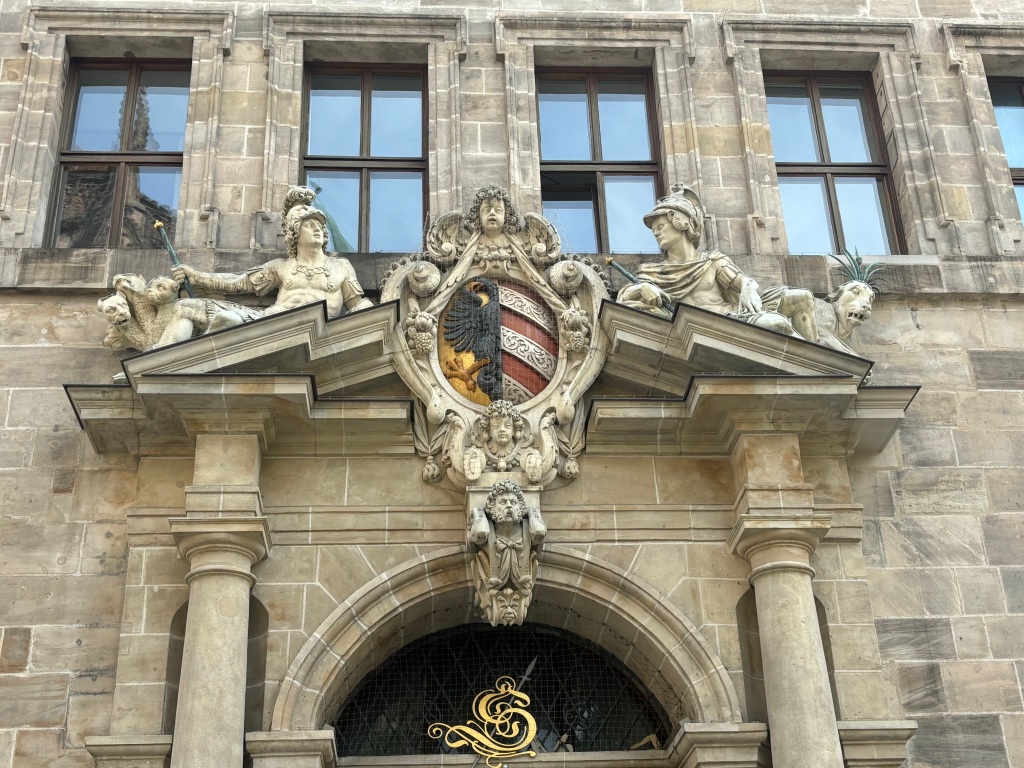
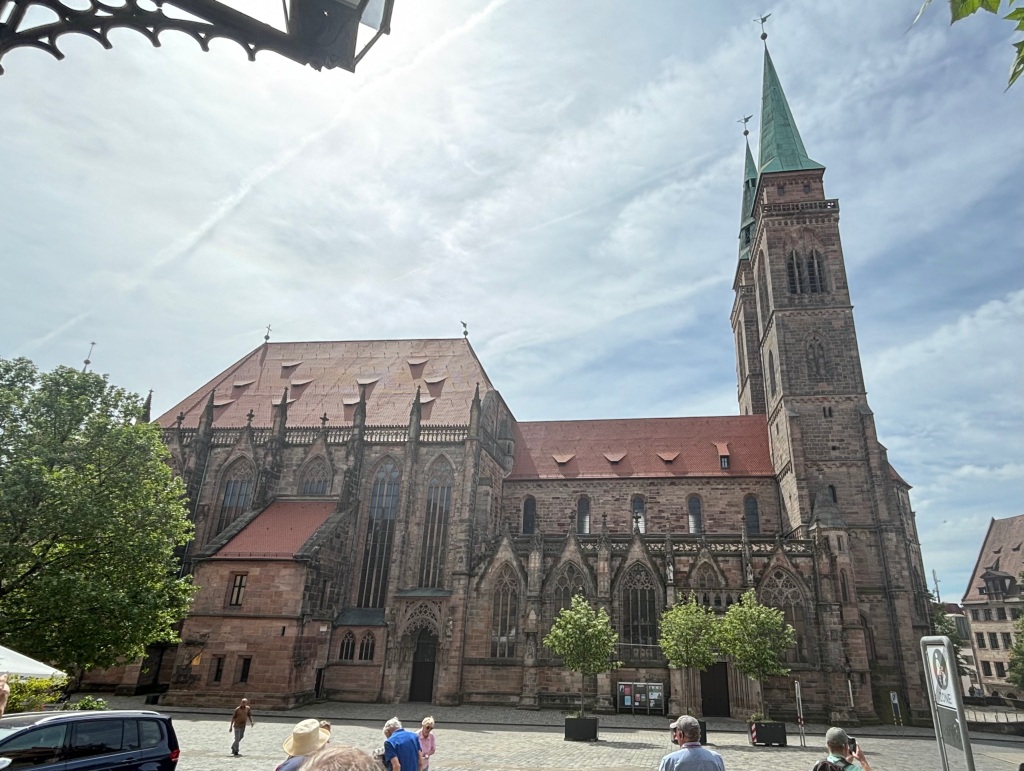
We ended in the current town square, where we found the daily farmer’s market, the Church of our Lady, and Schöner Brunnen, or the Beautiful Fountain.

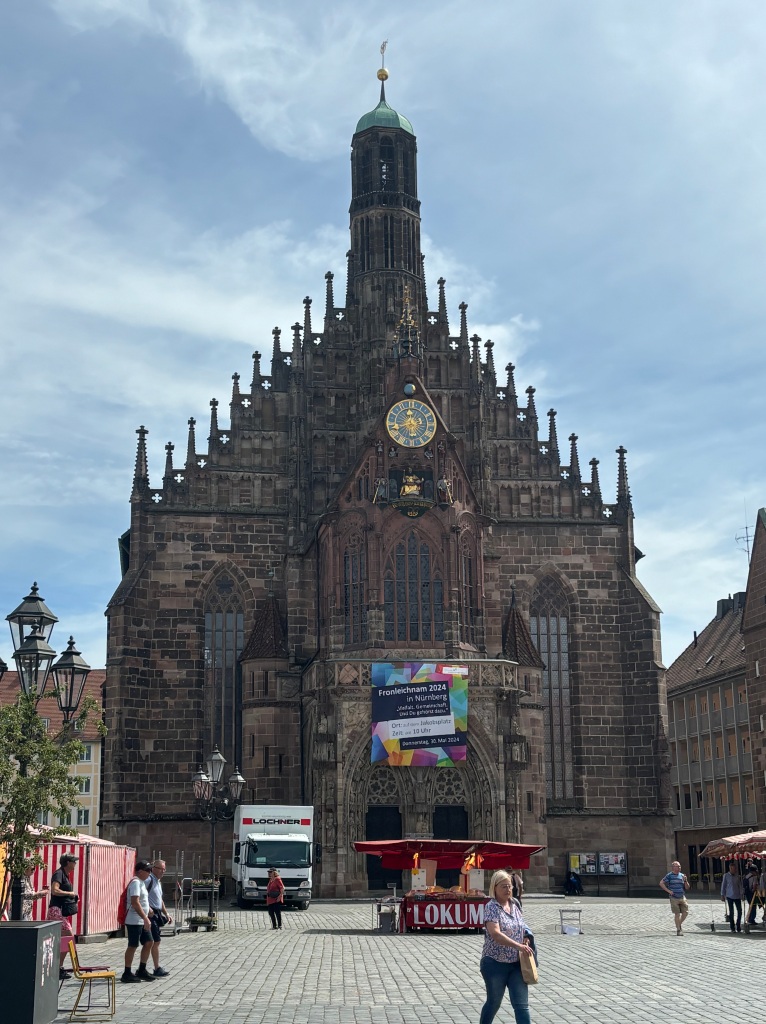
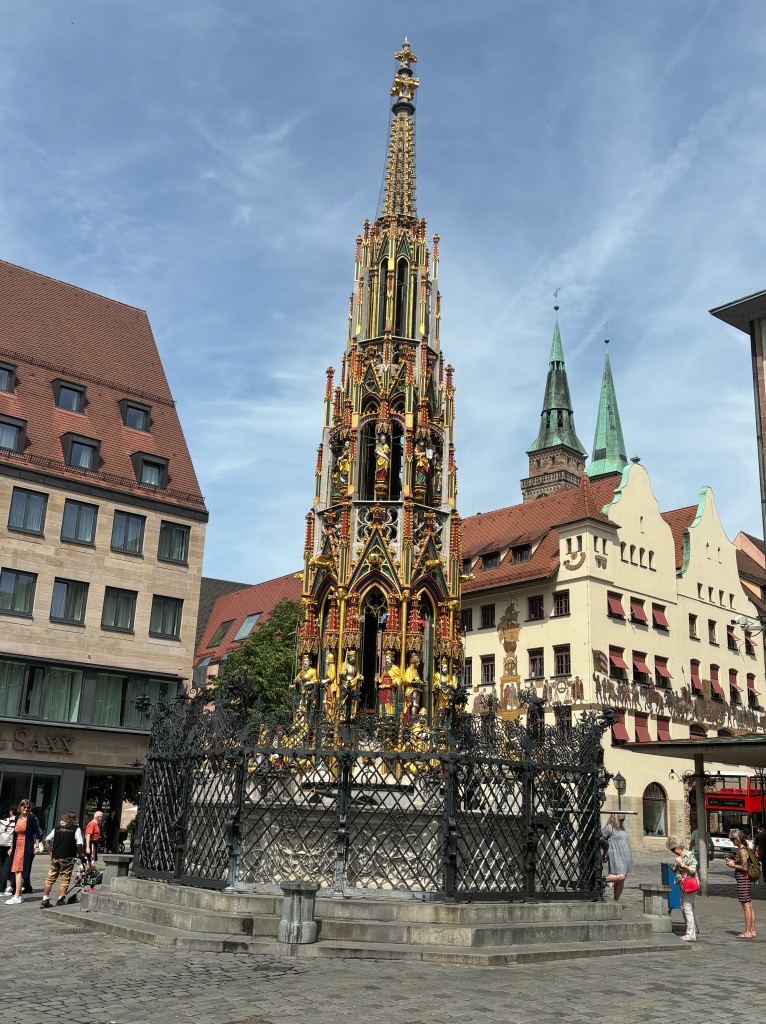
The fountain was built between 1385 and 1396. Its forty figures are meant to represent the world view of the Holy Roman Empire, what made it great: philosophy, the seven liberal arts, four evangelists, four church fathers, seven prince electors, nine worthies, Moses, and seven prophets. Isn’t it interesting there’s no representation of Christ?
There are two gold rings, one on either side of the fountain. Make a wish for anything but money, turn the ring three times and your wish will be granted!
